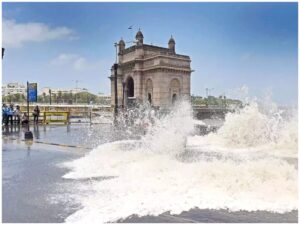Researchers from IITM Pune unveil how climatic conditions influenced historical invasions

Researchers from IITM Pune unveil how climatic conditions influenced historical invasions
Scientists from the Indian Institute of Tropical Meteorology (IITM) in Pune have uncovered a significant correlation between long-term climate patterns and major invasions in the Indian subcontinent. Their study, published in the Journal of Earth System Science, reveals how favorable climatic conditions made the region a target for external forces seeking wealth and control.
Led by senior scientist Naveen Gandhi, the research team analyzed 11 major invasions spanning from the 6th century BCE to the 16th century CE. They found that eight of these invasions occurred during periods of good Indian monsoons. The presence of trade routes further facilitated these invasions by providing access to valuable resources.
The study highlighted that most major invasions from central Asia coincided with favorable monsoon conditions in the Indian subcontinent and unfavorable conditions in central Asia. Notable exceptions were Alexander the Great and Timur, who invaded during weak monsoon periods, driven primarily by ambitions of global conquest rather than immediate economic interests.
The research delved into specific instances, such as the invasion by Cyrus II during a prolonged good monsoon in India and drought in central Asia. Similarly, Muhammad Ibn Al-Qasim’s invasion coincided with a favorable monsoon in India and weaker precipitation in central Asia.
Gandhi emphasized the study’s insights into the historical dynamics of the region, showcasing the intricate relationship between climate, trade networks, and invasions. Moving forward, the team aims to explore climatic conditions during the Harappan civilization’s phases, seeking to unravel factors contributing to its collapse and understanding climatic influences on Indian culture and historical events over millennia.
To conduct their study, the researchers utilized past climate data, including tree ring records from Kerala and oxygen isotope records from cave deposits in both India and central Asia. This meticulous approach allowed them to reconstruct climatic conditions over thousands of years, shedding light on how climate shaped ancient geopolitics.









